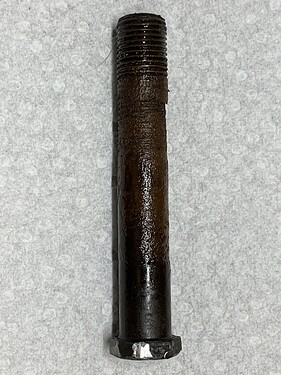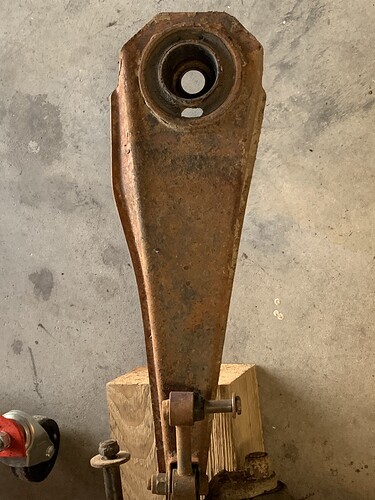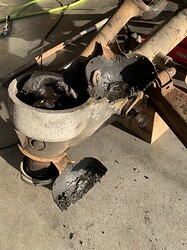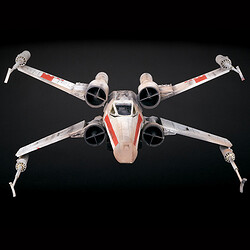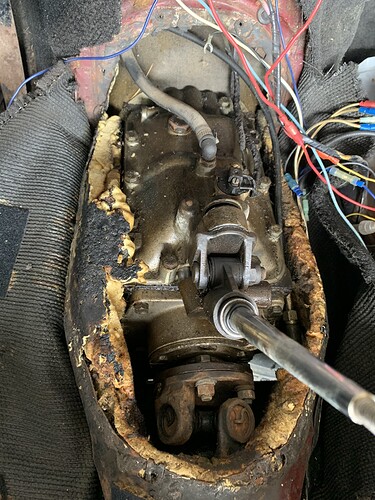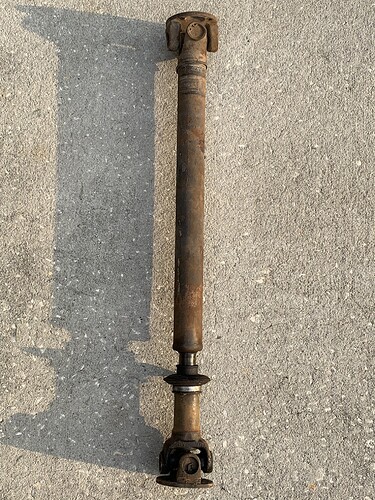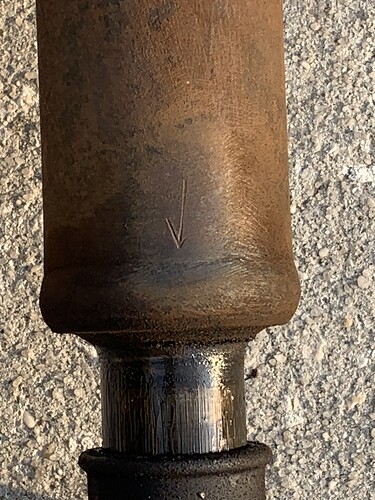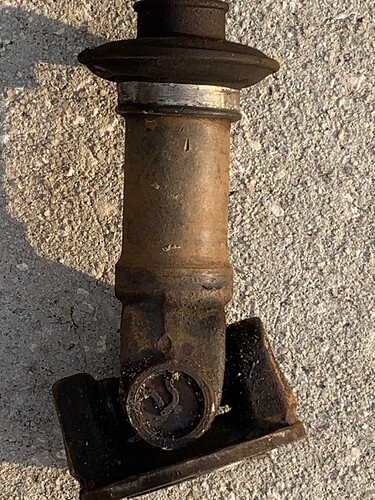Following @Wiggles lead, I’m going to start breaking this thread up into smaller pieces. I probably should have started doing that sooner. So, here’s the start of Part 2.
With the IRS out of the car, the shocks and springs removed and separated, and the brake cylinders removed and sent out for rebuild and sleeving, I determined the radius arm bushes need replacing and the arms themselves cleaned up and painted (or maybe replaced all together). This proved troublesome as I have the earlier style setup, where the head of the bolt securing the radius arm is countersunk in the wishbone. I removed the hub carrier without too much trouble, thanks to @davidxk’s pictures and notes for using a 5/8" rod as a dummy shaft.
To remove the radius arm bolt, I tried using some metal shims against the shock mount and loosening the nut against them to press the bolt out, but that started goobering up the threads as I put more and more pressure on it.
Next I tried a punch and hammer, and that didn’t do much either. I tried my “new best friend”, the air hammer, but it was hard to get a good straight shot and I just ended up getting frustrated. I thought about cutting the bolt itself, as I’ve read others have done, but I didn’t like that idea because it would give me less bolt to work with if it were really stuck in there.
So, I ended up fashioning a press with some 1/2" threaded rod and a couple of pieces of 2"-wide 1/8" -thick steel flat plate. That proved encouraging as I was able to get some good pressure on the bolt, but the 1/8" plate wasn’t strong enough and ended up bending pretty good.
Ultimately, I ended up using some 1.5"-wide 1/8" thick angle iron to replace the flat plate, and that ended up working, along with PB Blaster, a blow torch, and a BFH. That bolt was in there TIGHT and I had to use the press to push it out most of the way.
Some pictures:
In the end, the angle iron was bent up pretty good, but it WORKED!! I hope the other side will be easier when I get to it !!
The bolt removed!
It looks to be an original BEES…



